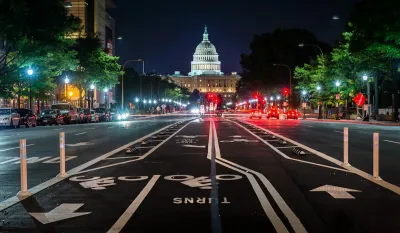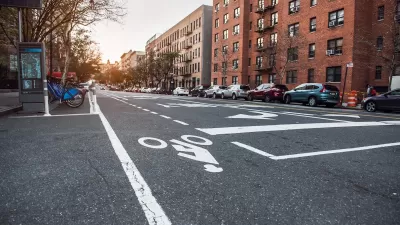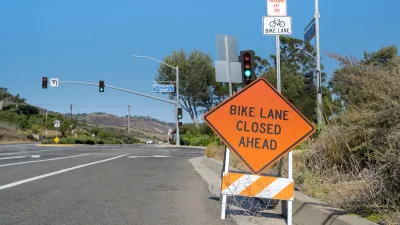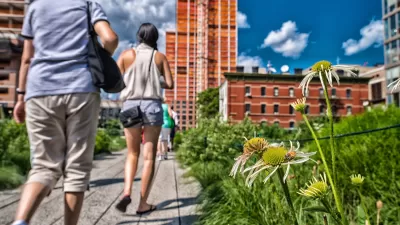The Trump administration is specifically targeting bike infrastructure and other road safety projects in its funding cuts.

Federal funding cuts for programs that supported safe streets and bike infrastructure will likely contribute to increased pedestrian deaths and halt or delay pedestrian safety projects around the country, reports Lois Parshley in Grist.
“These safety concerns were highlighted in a recent report by the Centers for Disease Control and Prevention, which found Americans were 50 percent more likely to die walking in 2022 than in 2013.” Interventions that prioritize safety over traffic speed would help reverse this trend, but the administration appears intent on ending funding for active transportation and road safety efforts such as the BUILD grant and any “funding to advance climate, equity, and other priorities counter to the Administration’s executive orders.”
According to Parshley, “Other funding likely to be caught up in these restrictions include projects within the Active Transportation Infrastructure Investment Program, which supports multimodal travel; the BUILD program, which is designed to meet local or multi-jurisdictional needs; and the Reconnecting Communities Pilot Program, which helps communities harmed by past transportation decisions.”
According to a DOT project manager who spoke to Grist, “It’s not only making people afraid to carry on with good work that was underway, but has a chilling effect on everything we do going forward.”
FULL STORY: The government aims to cut funding for safer streets. Here’s who would be hurt most.

Trump Administration Could Effectively End Housing Voucher Program
Federal officials are eyeing major cuts to the Section 8 program that helps millions of low-income households pay rent.

Planetizen Federal Action Tracker
A weekly monitor of how Trump’s orders and actions are impacting planners and planning in America.

The 120 Year Old Tiny Home Villages That Sheltered San Francisco’s Earthquake Refugees
More than a century ago, San Francisco mobilized to house thousands of residents displaced by the 1906 earthquake. Could their strategy offer a model for the present?

HSR Reaches Key Settlement in Northern California City
The state’s high-speed rail authority reached an agreement with Millbrae, a key city on the train’s proposed route to San Francisco.

Washington State Legislature Passes Parking Reform Bill
A bill that would limit parking requirements for new developments is headed to the governor’s desk.

Missouri Law Would Ban Protections for Housing Voucher Users
A state law seeks to overturn source-of-income discrimination bans passed by several Missouri cities.
Urban Design for Planners 1: Software Tools
This six-course series explores essential urban design concepts using open source software and equips planners with the tools they need to participate fully in the urban design process.
Planning for Universal Design
Learn the tools for implementing Universal Design in planning regulations.
Ada County Highway District
Clanton & Associates, Inc.
Jessamine County Fiscal Court
Institute for Housing and Urban Development Studies (IHS)
City of Grandview
Harvard GSD Executive Education
Toledo-Lucas County Plan Commissions
Salt Lake City
NYU Wagner Graduate School of Public Service





























